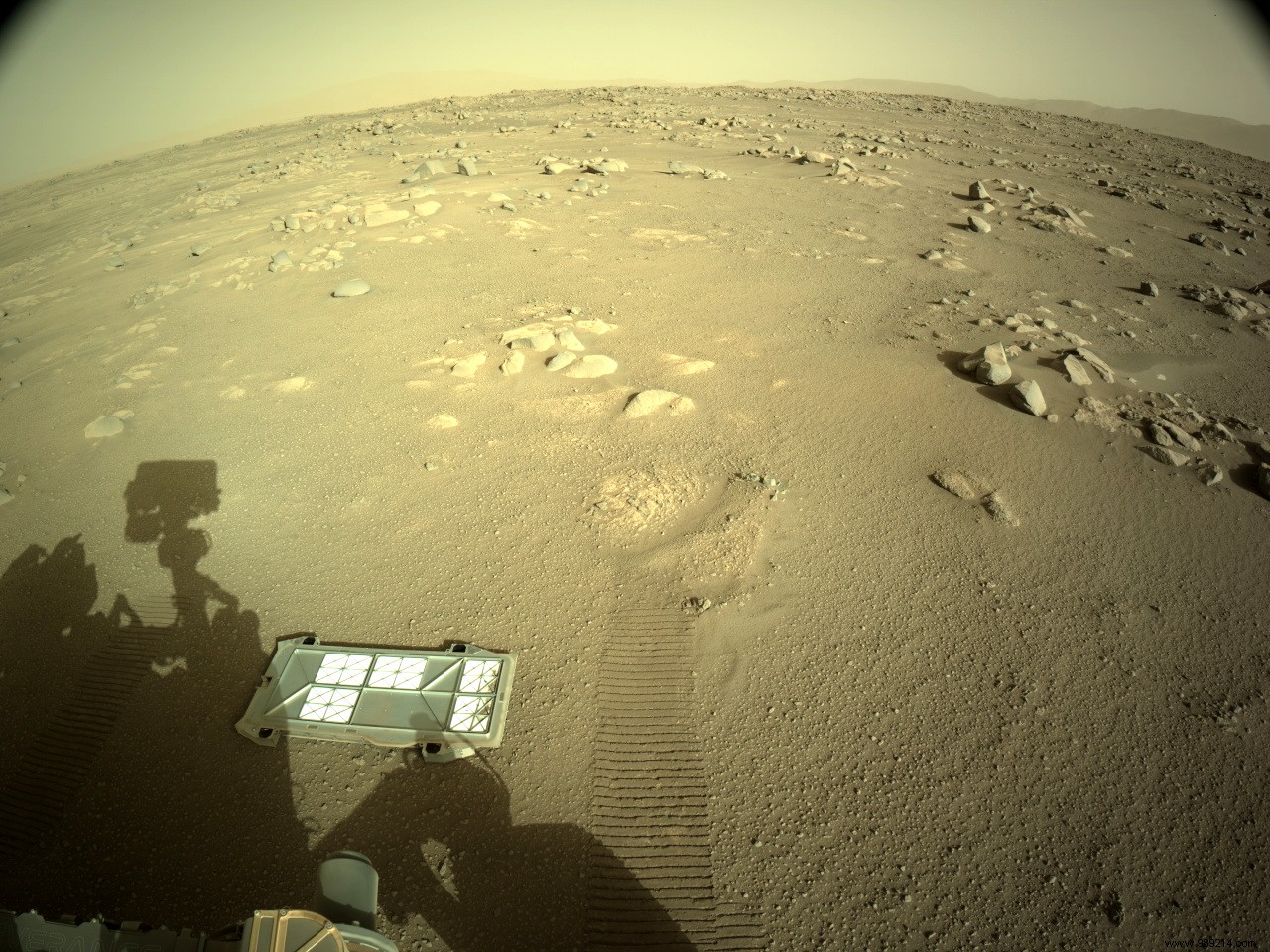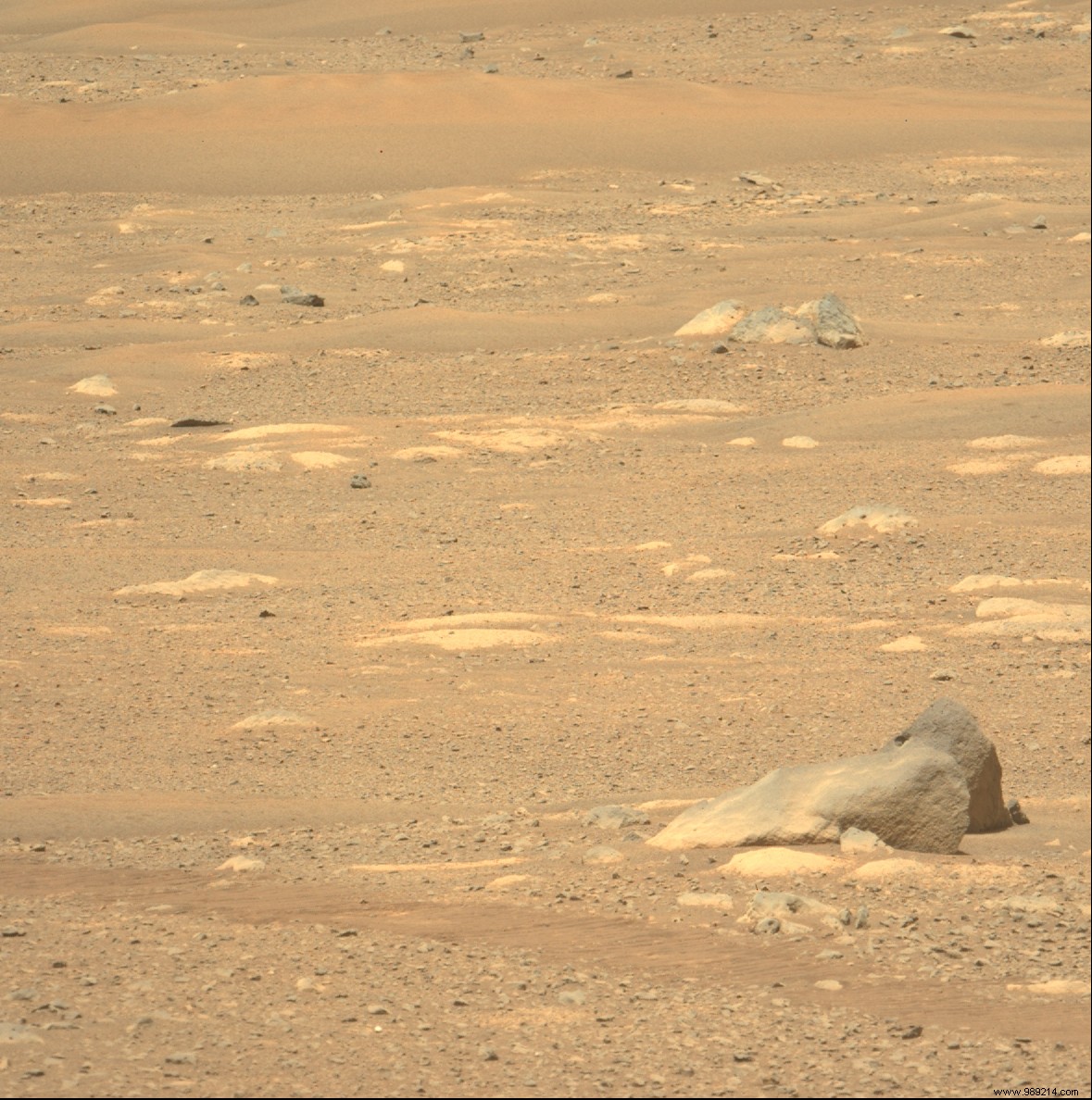On our planet, the remains of the first forms of life have almost entirely disappeared. But on cold, dry Mars, they could be buried right "under our feet".
A little over a month ago, Perseverance successfully landed on Mars. Since then, the teams have been working to check the rover's instruments. Researchers are now preparing for its next big step in the mission:flying Ingenuity. Once this flight is closed, Perseverance will dive seriously into its scientific work to search for traces of past life. What if NASA focused on Mars to try to answer this existential question:"Are we alone in the Universe?" is that there are good reasons.
Early in the history of the solar system, Earth and Mars were remarkably similar. Four and a half billion years ago, the two planets bubbled with magma before cooling into rocky crusts, filled with water and geological activity.
While on Earth chemistry gave way to biology, Mars was an equally friendly environment. Liquid water ran across its surface, protected by a magnetic field generated by the planet's core. On the other hand, Martian volcanoes squirted greenhouse gases into the atmosphere, coating the planet in a nice blanket of heat.
Today Mars shows a completely different face, both very cold and very dry. Yet this inhospitable desert appears to be the ideal place to discover traces of life, according to Dr Sarah Johnson of Georgetown University, who worked on NASA's Opportunity, Spirit and Curiosity rover teams. P> 
Back to 2017. Sarah Johnson joins her team at the McMurdo station, in Antarctica, installed on the slopes of Mount Boreas. You'll find it in the Olympus Range, a windswept mountain range that's mostly ice-free. Instead:silt, sand and some rocks. Its summit is one of the most Mars-like places on our planet.
As the team crosses this desolate expanse, Dr. Johnson then notices an area where the ground seems lighter. “There, beneath a pristine layer of ash, were the preserved remains of another world. 14 million years ago, before Antarctica turned into a polar wasteland – there had been a lake. For thousands of years it occupied the place where I stood, right under the soles of my boots. , she wrote.
Sarah Johnson then puts on a sterile suit and gloves to take some samples that look suspiciously like "tufts of human hair". Back at the McMurdo Station laboratory, she opens a small sterile tube to slip these relics of the past into it, taking care to isolate one of these strands of material on the way to place it in an empty Petri dish.
And there…. surprise ! “When I added a drop of water, the sample quickly began to rehydrate. Virtually all the plants and animals that once inhabited the Antarctic interior are gone, but there, in the palm of my hand, I could see the tiny leaves of ancient bryophytes." .
Fascinated, Sarah Johnson then passes the sample under the microscope. "The depth and detail were extraordinary, accentuating the beauty of these organisms that had lived their lives on a vastly different continent" .

Nowhere else on Earth would these samples have been so wonderfully preserved as they were in Antarctica, locked in a deep, dry freeze. In a tropical or temperate environment, the carbon bonds would have broken quickly. Just as heat and water can allow life to flourish, these two factors can also promote its decomposition and disintegration.
So this experience takes us back to that cold, dry, unchanging place that is Jezero Crater. Naturally, Perseverance is unlikely to stumble upon such a complex life form as a bryophyte, but perhaps it will be able to isolate traces of an ancient microbial ecosystem.
On Earth, these remnants of life would have been buried long ago due to plate tectonics, but the Red Planet lacks them. If life once flourished here, and left its mark, then perhaps those marks are right under its wheels.